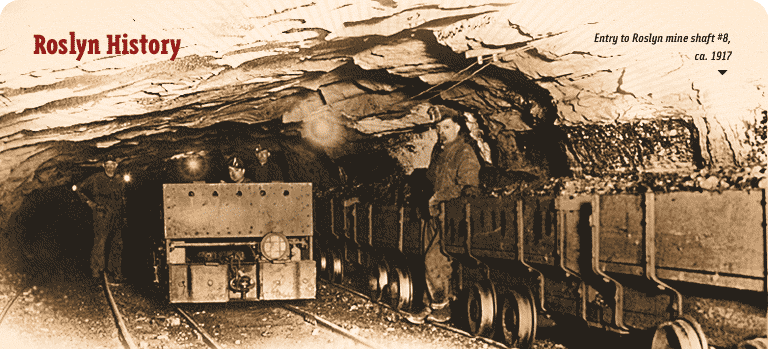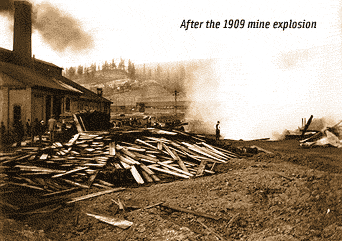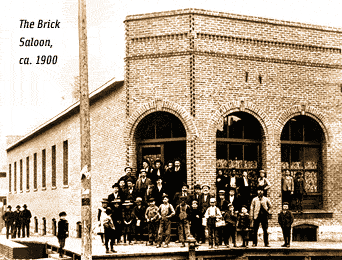|
 |
|
Roslyn was platted as a town site in 1886 due to the discovery of large coal deposits underlying the region. The Northern Pacific Coal Company, a subsidiary of the Northern Pacific Railroad, developed the coal deposits and established the town to provide coal for steam engines fueling up for the trip across the Cascade mountains. When railroads converted to diesel engines, there was little market for this type of soft coal, and Roslyn's last mine closed in 1963.
During the thriving days of the mines, immigrants came from all over the world to Roslyn to work the mines. Workers and their families came from Italy, Poland, Germany, Lithuania, Slovenia, Scotland, Serbia, Croatia, England, Ireland, and numerous other countries. Roslyn's mix of ethnic origins was truly representative of the melting pot variety of America during these times. These different groups spoke many languages and kept their own traditions as seen in the Roslyn Cemetery with its 26 individual ethnic and lodge cemeteries. Many Roslyn residents today are descendants of these immigrant miners with many of the original surnames still in use as these families continue to live on in Roslyn. Wonderful recipes from many of these "old Countries" continue to be prepared in the kitchens of descendants of these original Roslyn pioneers.
|
|
|
|
Roslyn was the site of two major mine disasters, with the biggest coal mine catastrophe in the state occurring on May 10th, 1892. Forty-five miners were killed in an explosion with many people losing fathers, brothers, and sons all in one blow. Photographs of the somber funeral procession down Pennsylvania Avenue give some idea of the painful impact of this event on Roslyn's history. The second mine explosion occurred in 1909 at the #4 mine which was located behind the present day Roslyn Library. Ten people died in this disaster.
Like many American towns in the nineteenth century, Roslyn experienced a major fire which destroyed the majority of its commercial district. The fire occurred in 1888, and as a direct response many buildings built after the fire were constructed of brick or sandstone quarried from local sandstone. Many of these brick and sandstone structures are still in use today. Examples include the Brick Tavern and the Northwest Improvement Company Store, both which were built in 1889, and the Fischer Building c. 1890.
Roslyn was a thriving metropolis of over 4,000 residents in the 1920's, during the coal mines' heyday. During those days Roslyn's commercial district consisted of 4 square blocks. We now have about one dozen of these buildings left, and value them as prime representatives of western frontier commercial architecture. At Pennsylvania Avenue and First Street are three vintage brick buildings, including The Brick Tavern (in continuous operation since the 1890's, complete with a working running water spittoon trough at the base of the bar). At second and Pennsylvania are some buildings built with sandstone blocks, including the Roslyn Cafe.
|
|
|
|
|
|
|
|
 |
|
|
|
|
|
|
|
|
|
|
|
 |
|
|
|
|
During its days of prosperity, the Northern Pacific constructed the Roslyn Athletic Club for miners and their families. It was completed in 1902 and contained a gym, meeting rooms, and a bowling alley. Roslyn's Library which was founded in 1898 moved into the RAC building in 1918, and holds the honor of being the oldest library in Kittitas County.
Roslyn retains the flavor of its history in its architecture and in its natural features. Its heavily forested boundaries provide a distinct edge between the man-made and natural surroundings with no urban sprawl cutting into the forest. Visible mine ruins testify to our coal mining heritage, while the railroad tracks have been removed and replaced by the Coal Mine Trail. A walk on the trail affords visitors a look at the remains of Roslyn's mines, at the railroad depot site and barn, and at Powder House Road where dynamite was stored. Unlike many places in America, Roslyn's history and heritage remain obvious after more than one hundred years.
|
|
|
|
|
|
|
|
|
|
|
|
|
|
 |
|
|
|
|





























